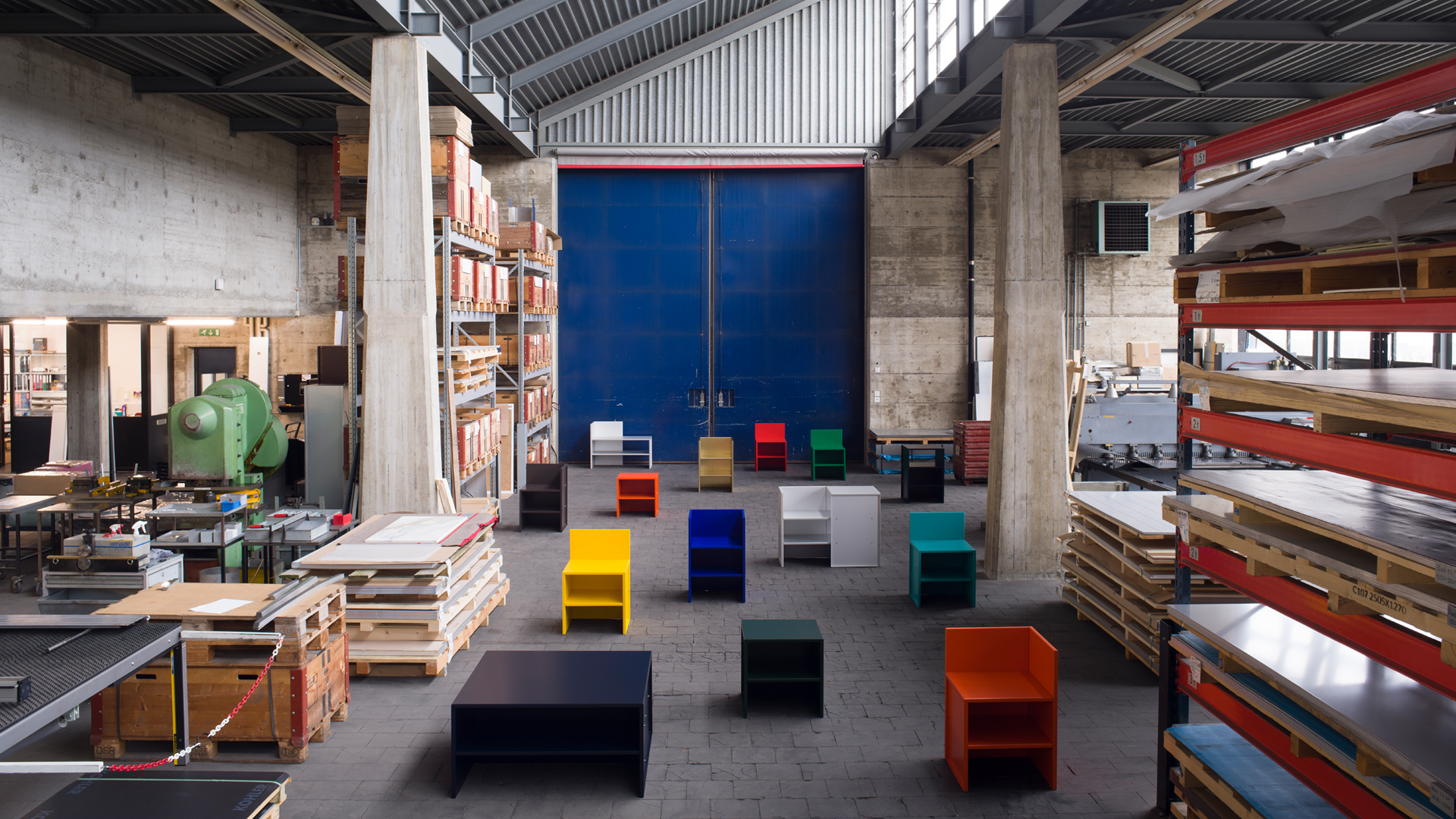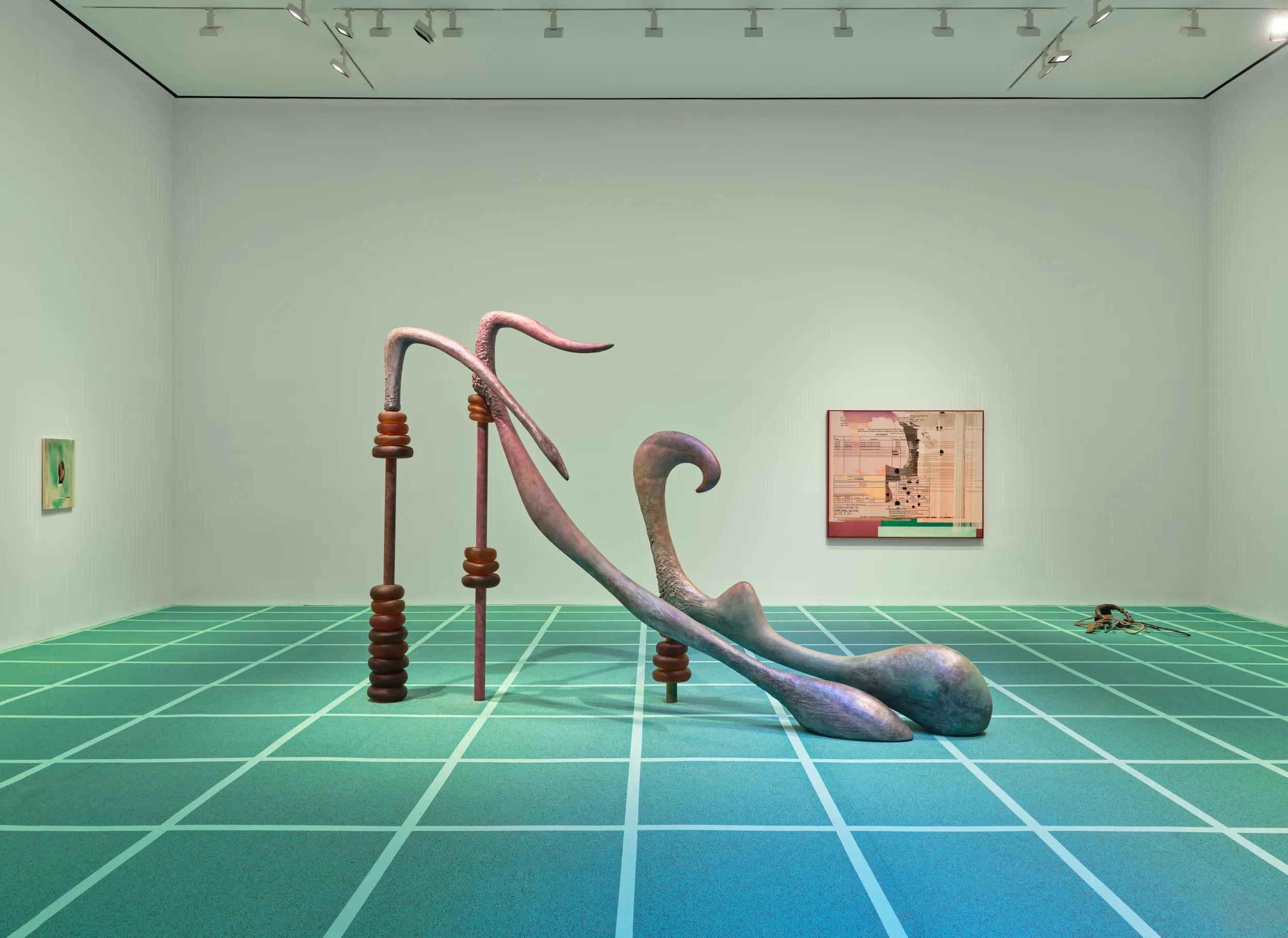
Roman Signer
11 May - 12 October 2003
Hauser & Wirth Collection
The Hauser & Wirth Collection in St. Gallen, Switzerland, pays tribute to the Swiss artist Roman Signer (b. 1938) with a comprehensive exhibition of his work. The exhibition ranges from his earliest water objects 'Wasserleiter (Water Ladder)' (1971), 'Grosser Tropfen (Large Drop)' (1973), 'Kraft des Regens I (Power of Rain I)' (1974) and 'Treppe (Stairs)' (1976), super-8 films made between 1975 and 1989, major sculptures and installations from the 1980s and 90s including 'Fontana di Piaggio' (1993) and 'Blaues Fass (Blue Barrel)' (1999) which were shown by the artist in the Swiss Pavilion in the 1999 Venice Biennale, to over a dozen new works realized specially for the presentation in St. Gallen. Roman Signer will put on new actions for the public at the opening and during the course of the exhibition. Looking back at Signer’s work over the years and forwards to his new projects, this exhibition not only celebrates his extraordinary creative power and love of experimentation, but also bears witness to the striking continuity – past and present – of his artistic thinking. Although he is known to many for his spectacular actions with dynamite – transformation, explosions and demolition are only one side of Roman Signer’s artistic work. With his events and installations since the 1970s, he has also in effect redefined certain aspects of sculpture, incorporating time, acceleration and change into the sculptural process and exploiting the medium to the full. And when a suitcase rotates through the space – in 'Koffer (Suitcase)', made specially for this exhibition – we see Signer grappling with the most fundamental of sculptural issues, namely space and mass. Characterized by processes and potentialities his work takes into account the concepts of Minimal Art and Concept Art, and with this Signer occupies a unique position in the recent history of sculpture. Roman Signer explores the relationships between sudden energy releases and calm, between order and chaos, and the existence of form in the apparently formless. Physical forces like gravitation and motor energies are both a challenge to the artist and the instruments he relies on to realise his sculptural ideas. And in his work classical sculptural materials have been usurped by sand, water and ordinary everyday objects – barrels, bicycles, kayaks. Meticulous planning and incalculable chance inteact generating ‘poetic’ visual installations with their own highly developed individual aesthetic. Signer’s artistic explorations of the world around us and its phenomena changes our perceptions and even seems to alter reality. Often the mere indication of a sudden or possible release of energy is enough to transmogrify a simple configuration of objects – a movable wooden arm and a rocket – into a wittily succinct visual commentary on the relationship between cause and effect. Roman Signer’s work is memorable for its systematic logic, for the precision and simplicity of its materials and means which seem to have come to the fore all the more in the last few years as younger artists have started to tap into Signer’s artistic thinking, albeit sometimes translating it into elaborately technical installations.
Selected images
Installation views


About the Artist

Roman Signer
Swiss artist Roman Signer has been redefining sculpture for more than 40 years and is now regarded as one of the finest representatives of Process and Conceptual art. He produces elementary dynamic sculptures and installations, also known as time sculptures for their preoccupation with the transformation of materials and objects through time. In his actions, acceleration and change are part of the creative process and he uses photography and moving image to document his work.Characterized by processes and potentialities, his work takes into account the concepts of Minimalism and Conceptualism, and with this Signer occupies a unique position in the recent history of sculpture. Signer exploits the possible uses and limitations of everyday objects, such as umbrellas, bottles, tables, chairs and candles, through a process guided by both curiosity and discipline. Like the director of a thriller, he makes use of tension and surprise—with the distinction that in his case everything takes place in the here and now. The works are the direct result of processes initiated by the artist.
Signer’s work explores the relationships between sudden energy releases and calm, between order and chaos, and the existence of form in the apparently formless. Physical forces like gravitation and motor energies are both a challenge to the artist and the instruments he relies on to realize his sculptural ideas. In his work, classical sculptural materials have been usurped by sand, water and ordinary objects. Meticulous planning and incalculable chance interact, generating ‘poetic’ visual installations with their own highly developed individual aesthetic. Signer’s artistic explorations of the world around us and its phenomena changes our perceptions and even seems to alter reality. Often the mere indication of a sudden or possible release of energy is enough to transmogrify a simple configuration of objects—a movable wooden arm and a rocket—into a wittily succinct visual commentary on the relationship between cause and effect.
His work has been presented in numerous museums and galleries worldwide and has been selected for prestigious international exhibitions such as the Venice Biennale, where he represented Switzerland in 1999, Skulptur Projekte Münster (1997) as well as Documenta 8 in Kassel where during ‘Action in front of the Orangerie’ he catapulted 350.000 sheets of paper into the air simultaneously with an explosive charge.
Current Exhibitions
1 / 12












